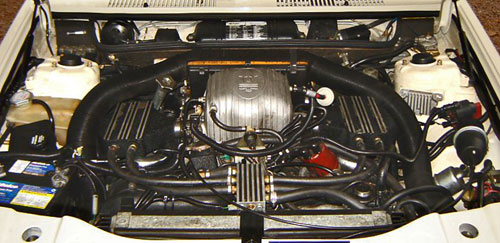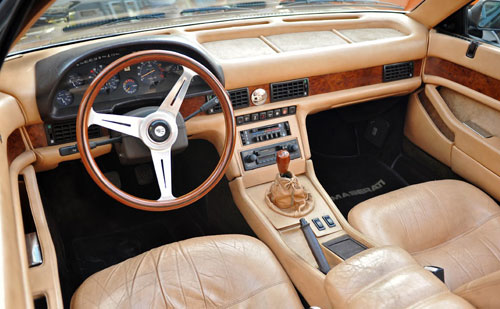Movie Stars: The Maserati Biturbo 425i

So I watched Licence to Kill over the weekend. The 1989 film is the second of the two James Bond productions featuring Timothy Dalton as the iconic British superspy, and although it has a reputation as one of the less worthwhile Bond films, I enjoyed it. The movie’s tone is considerably darker than the relatively lighthearted Roger Moore outings, and although the script and Dalton’s personality mean there isn’t much “Bond” in the film in the sense of memorable interactions or one-liners, it functions rather well as a lean-and-mean “generic” spy thriller. And some of the explosions are absolutely epic.

Unfortunately, one of the definite downsides of Licence to Kill is that there isn’t really a Bond car as such. No Aston DB5, no Lotus Esprit, nothing—Bond’s conveyance during the main action setpiece is an 18-wheel tanker truck, of all things. Really the only car in the film that has any semblance of appeal for the enthusiast is the one driven by the antagonist’s henchmen, the 1987-1990 Maserati Biturbo 425i.

As with its already-esblished 2-door stablemate, beneath its rakish Italian skin, the Maserati is powered by a 2.5l SOHC V6 with a pair of turbochargers hanging off the cylinder heads. And as you might expect, the Italians didn’t engineer the car to a level of quality commensurate with its potential on paper. Put another way, in spite of its looks, the Biturbo was a turd of a car, catastrophically unreliable and with a power output of only 188 hp, far below what you would anticipate from the displacement figure and presence of the turbos.

It is beautiful, though—in a wedge-y, boxy, ’80s sort of way, an aesthetic I’m particularly drawn to. The lines are strong and consistent inside and out, a 5-speed manual transmission option was offered and power was sent to the rear wheels. The raw elements were there, but Maserati’s quality at the time was appalling, rivaling British Leyland at its worst. The ingredients of greatness were present, and when everything worked perfectly… Jeremy Clarkson once said about Alfa Romeo, “They build a car to be as great as a car can be—briefly.” The same might be said of the unsung hero of Licence to Kill, the 4-door Biturbo.
Editor’s note: This post is part of an ongoing series discussing cars which featured prominently on film or television. Read the other installments here:
- McLaren P1 (The Weeknd’s “Starboy” music video)
- Ferrari 328 (Sleigh Bells’ “Infinity Guitars” music video)
- Maserati Biturbo 425i (Licence to Kill)
- The cars of Back to the Future Part II
- Aston Martin DB5 (James Bond franchise)
- Sunbeam Alpine Mark I (To Catch a Thief)
- Adams Probe 16 (A Clockwork Orange)



